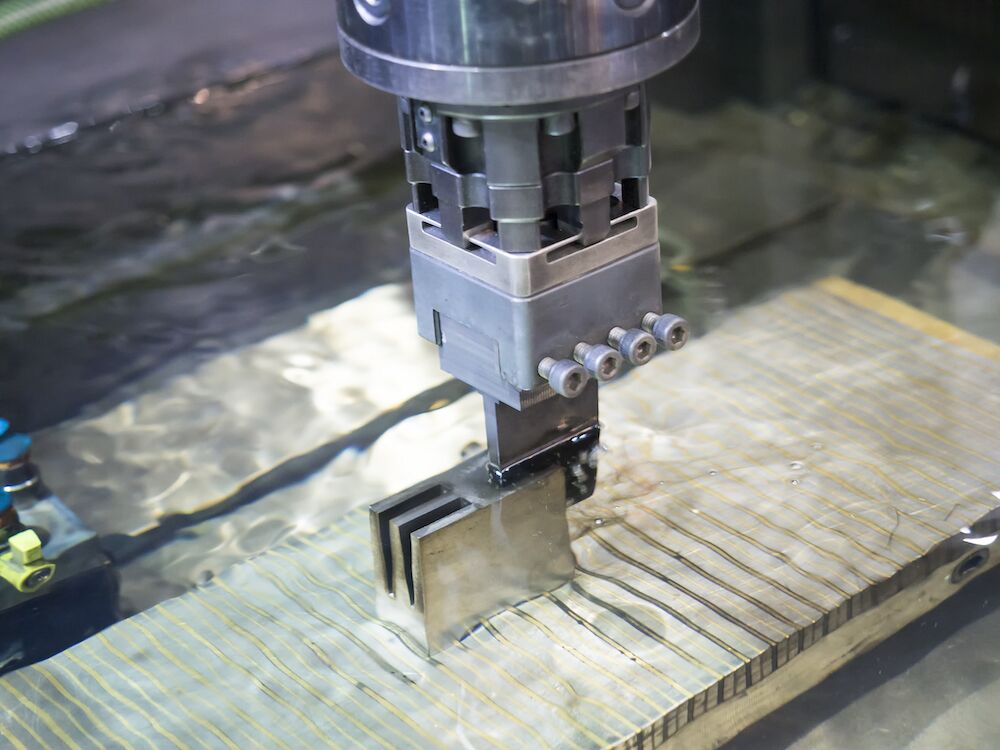Electrical Discharge Machining (EDM) has revolutionized the manufacturing world, allowing for intricate designs that were once impossible. But while this technology makes it easier to make precision machining parts, it also comes with some problems that every operator should be aware of.
There are several risks of EDM, including electrical hazards, fire dangers, material limitations, higher costs, and more. Operators face risks from high-voltage equipment, which can lead to serious injuries. Safety measures are crucial to reduce these EDM risks.
We’ll explore the specific hazards associated with EDM and discuss essential safety standards to follow to stay safe. Understanding these risks is vital for anyone involved in operating this machine.
What Are the Risks of EDM?
The risks associated with EDM can be broadly categorized into three groups:
- Electrical
- Mechanical
- Chemical
You see, working with EDM machines involves high voltage. Operators can easily get electric shocks or electrocuted if safety measures aren’t followed. Even if these major accidents don’t happen, there’s always a risk of burning because you have to work with live electrical parts.
Since these machines have moving parts, workers might accidentally get caught in machinery or struck by flying bits of material. It’s essential to keep hands and loose clothing away from these areas.
The machining process can also cause fire hazards and release toxic fumes. Toxic gasses can irritate the skin or eyes and may pose long-term health risks. Also, improper disposal of waste fluids can lead to environmental issues.
By understanding these risks, operators can take steps to stay safe and ensure a productive work environment.
What is EDM?
EDM is somewhat similar to a CNC machine but uses electrical discharges for cutting metals. It relies on releasing tiny electrical sparks to remove material from a workpiece. Only certain materials, like brass, aluminum, and steel, can be machined this way because they conduct electricity.
Instead of cutting, an EDM machine erodes conductive metals with intense heat. It uses a soft electrode made of graphite to create the sparks. These sparks reach temperatures between 14,500 and 21,500 ºF! When the metal vaporizes, the machining center uses a dielectric fluid, usually oil, to wash away the particles.
There are three main types of EDM:
- Die-Sinking EDM: Uses a pre-shaped electrode to create specific designs.
- Wire EDM: Employs a thin wire that produces electrical discharge to cut through metal.
- Hole-Drilling EDM: Creates small, precise holes without leaving any rough edges.
Most conductive materials can be machined with EDM. However, machining high-grade nickel alloys, often used in aerospace, is tricky. Specialized tools and techniques can sometimes make it possible to work with these materials.
Risks and Solutions of EDM
Like wire EDM machining or other methods, EDm has its unique advantages and disadvantages. Here are some risks of EDM and the measures you can take to minimize them:
Cost
The EDM process consumes a high-level of energy, which increases expenses and also raises concerns about the environment. The cost of materials is also high because EDM demands specialized components, like custom electrodes and dielectric fluids. For businesses that work in low-volume production, these costs can add up quickly, making this machining process less appealing.
Moreover, the initial investment for EDM machines can be steep. Advanced models with numerous features often cost more than traditional equipment. This upfront cost can deter some companies from adopting this technology.
Solution
To address the high energy costs, companies can explore renewable energy options. Solar or wind power can significantly reduce electricity expenses and improve sustainability. Bulk purchasing can cut down the material costs since the sellers may offer discounts on larger quantities.
For initial investment, leasing machines might be a smart move. Instead of buying, businesses can lease EDM equipment to reduce upfront costs. And investing in training for technicians can be beneficial. Skilled workers can operate EDM machines more efficiently, minimizing waste and reducing overall labor costs.
Materials Limitations
One major limitation of EDM machining is its restriction to conductive materials. If a project requires non-conductive materials, like plastics or composites, EDM simply isn’t the right choice. This can be problematic when those materials are essential for the design.
Another risk arises from the thermal effects of the EDM process. The intense heat generated during machining can change the structure of the material being worked on. Even with conductive materials, this alteration can affect the strength and durability of the final product. High-grade alloys, for instance, may be challenging to work with due to these thermal changes, leading to potential quality issues.
Moreover, securing delicate parts for EDM can be challenging. If a component is not held firmly, it might get deformed during the machining process. This not only affects the part’s quality but can also disrupt the workflow.
Solution
What can be done to tackle these EDM risks? You have to choose the right materials from the start. By ensuring that only conductive materials are selected, many complications can be avoided. Additionally, using advanced cooling techniques can help manage the heat generated during machining, preserving the integrity of the material.
For delicate components, using specialized fixtures can provide better support without risking deformation. These fixtures can hold parts securely and maintain their shape throughout the EDM process.
Low Rate of Material Removal
Compared to CNC milling, turning, or other traditional methods, the material removal rate is quite low in EDM machining. Slow removal rate increases production time, leading to higher costs, especially for large projects. Companies may find themselves spending more on labor and energy.
Also, EDM uses high temperatures to erode material, which can cause changes in the workpiece’s properties. If the removal rate is low, the heat may build up, increasing the risk of warping or compromising the integrity of the material.
Solution
One effective strategy is optimizing the EDM process. By fine-tuning some parameters, such as pulse duration and current settings, operators can improve the efficiency of material removal. This adjustment can speed up production without sacrificing quality.
Additionally, choosing the right electrode materials can make a big difference. Certain materials conduct electricity better and can enhance the machining process. This means operators can achieve a higher removal rate while using less energy.
Production of Flammable Gasses
The EDM process can produce some flammable fumes from the dielectric fluid. The type of gas formed depends on several factors, such as the fluid used, the machining material, and the conditions during machining. If the level of dielectric fluid is too low, gasses can escape into the air, creating a hazardous environment.
Another concern is the possibility of gasses getting trapped. It occurs when gas bubbles form and get stuck either in the workpiece or within the fluid system.
Solution
Maintaining the proper fluid level is essential for avoiding the production of flammable gasses. Machines should have an automatic shut-off feature that activates if the fluid drops too low. This simple solution can prevent dangerous situations before they start.
To combat gas trapping, operators should carefully position the workpiece. If it’s not possible to avoid trapping, there should be a proper ventilation system in the workshop.
Fire Hazards
Fire hazards are another potential problem of EDM machining. The dielectric fluid cools the machined part and prevents sparks. If the part is not fully submerged in the fluid, it increases the chance of a fire.
Another issue arises if the operator removes safety features, like the diffuser in the fire-extinguishing system. This can make the machine vulnerable, especially if it’s running unattended.
Solution
To tackle these EDM risks, your workshop must have automatic fire suppression systems, particularly for machines that operate at high amperage or cut deep. These systems should be designed to alert users with a loud warning, giving them time to react before discharging.
Also, if a machine lacks automatic protection, it’s essential to have safety equipment on hand. Keeping a CO2 extinguisher rated for at least 12 B:C near each machine can be a lifesaver. Regular checks on these extinguishers ensure they’re ready when needed.
Environmental Impact
One of the major risks of EDM machining is toxic emissions. During the machining process, high temperatures can release harmful substances, contributing to air pollution.
This mixture often contains heavy materials that do not break down easily. When not disposed of properly, these materials can contaminate soil and water sources. This highlights the importance of responsible waste management in EDM practices.
Also, this technique requires a lot of electricity, leading to high energy consumption. Many EDM wire manufacturers are now looking for ways to reduce their carbon footprints.
Solution
Companies can use eco-friendly dielectric fluids to reduce the harmful effects of disposal. These fluids are designed to break down more easily and pose less risk to the environment.
Also, improving energy efficiency in EDM machines can help reduce electricity usage. Upgrading to modern equipment that uses less power can make a significant difference. Companies can also invest in renewable energy sources to power their operations, further lowering their environmental impact.
Conclusion
While EDM is a fantastic tool for creating precise parts, the machining process also presents some risks. You should understand these challenges and implement safety measures to ensure the safety of everyone in your workshop. Investing in training and efficient practices not only protects workers but also enhances productivity.Need precision EDM components for your project? Zintilon offers custom EDM metal cutting services with expert craftsmanship. Talk to our expert teams and get a free quote.
Keep an eye for more news & updates on EssentialTribune!








